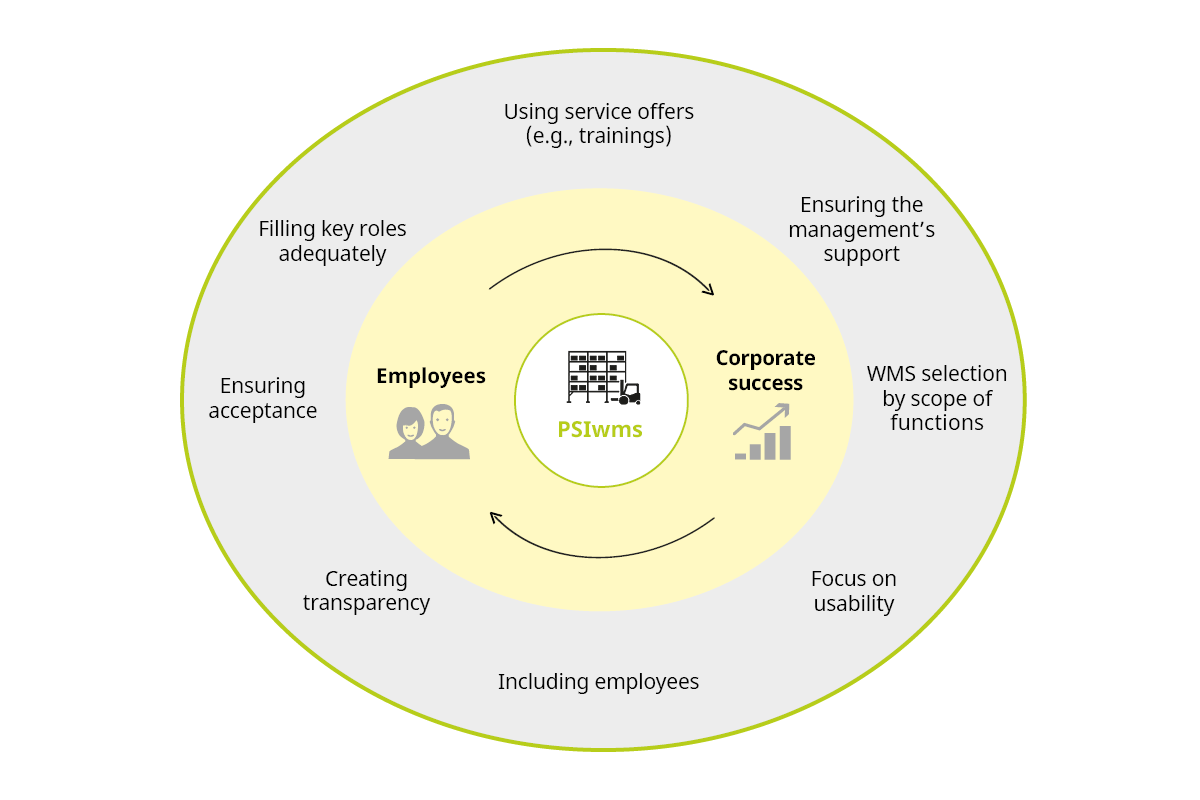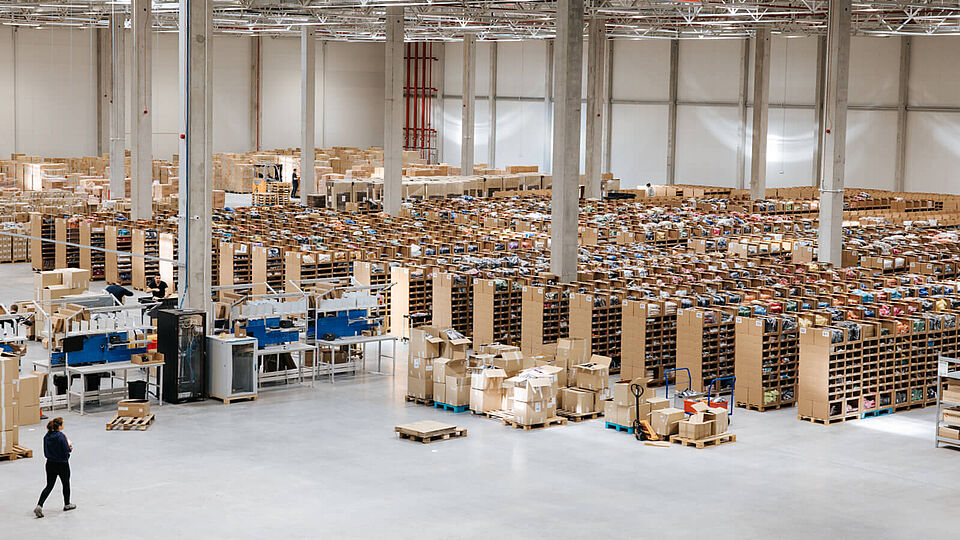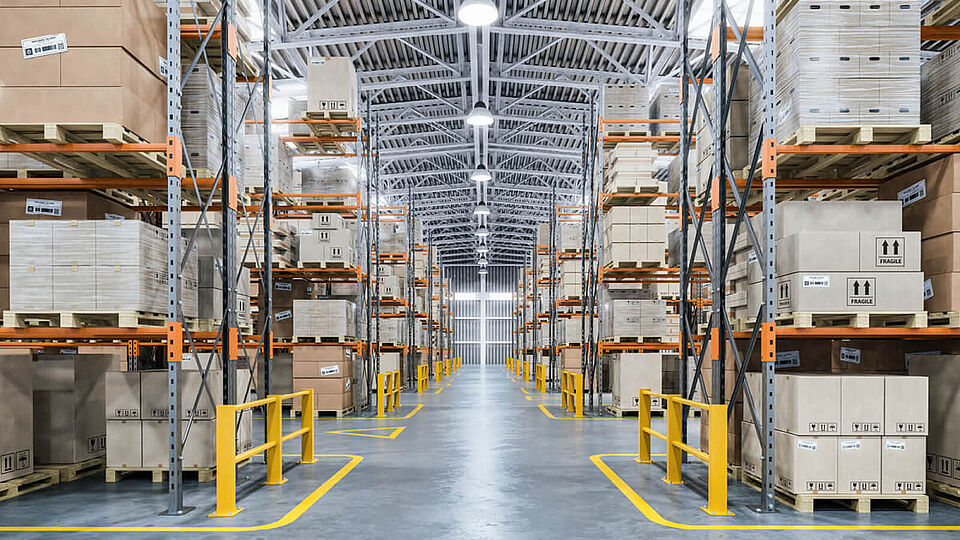Learn why you need to focus on your employees first.
Given the wide range of warehouse management systems available, it can admittedly be difficult to choose the right one. Depending on the industry, the size of the company and the core process, different factors play a decisive role in choosing the right WMS. From the decision maker's perspective, this mainly includes the range of functions and the references of the manufacturer implementing it.
In the current WMS Market Report Compact 2022 published every two years by the Warehouse Logistics Team of Fraunhofer IML, the most important five criteria for selecting a WMS provider from the customer's point of view are presented. This includes:
- Functionality
- Industry references of the provider
- Usability
- Simple parameterization
- Easy integration into existing processes and IT landscape
The critical human factor
In addition to the technical details, another aspect that is often not considered should also be looked at. Because ultimately, each software faces the same challenge: the user. The human aspect within your organization is critical to project success and should not be underestimated.
As software users in logistics, employees are faced with the new system on a daily basis. Therefore, they should particularly be focused on when it comes to the implementation of a WMS. The goal is to increase the efficiency and satisfaction of your employees through a straight-forward system.
The current WMS Market Report Compact 2020 by Fraunhofer IML puts it even more clearly:
The success of a WMS therefore depends to a large extent on the users of a company. Which aspects are to be considered in particular? What should you pay attention to in terms of employees when selecting or implementing a new WMS?
Involving employees and filling key roles adequately
You should show your employees what the added value of the warehouse management system is and help them understand how it will improve their daily work routine and workflow even before it is implemented. In particular, the digital transformation of the warehouse is accompanied by a continuous change process and should be communicated to employees right from the start.
For example, include shift supervisors or similar roles in the workshops on a theme-specific basis to develop a contact person for employees in the area. Your workforce's acceptance of the new software is a prerequisite for a successful WMS.

In the next step, devote your attention to those employees who perform key roles. This includes key users and project management. Key users are employees who use the WMS the most frequently and most intensively. They should attend user training sessions and act as a contact person for your employees. At the same time, they serve as pioneers for adaptations and should know the WMS very well. Key users should generally be willing to embrace change and be open to new workflows. Experience and good knowledge of the company are equally important. The project management should also be well-chosen and should always be able to maintain an overview of the software in their leadership role.
A high level of usability of the WMS ensures success
Software that does not simplify or improve daily work routine will not be accepted by your employees. Accordingly, the key to constant software usage is: Usability. Since only a user-friendly WMS can make warehouse processes as efficient as possible. This applies to processes and the quality of the employees' work.
Ease of use is a key factor in ensuring acceptance of the newly introduced system. In addition, employees enjoy working with mobile data acquisition (MDA), and the use of smartphones and tablets adds even more value to their work. One warehouse management system that particularly focuses on usability is PSIwms.
With its high degree of customization and intuitive operation, PSIwms is ideally geared to the needs of its users. With the PSI Click Design, you ensure that each employee can individually design their workflows according to their needs. Complex changes to the interface structure and simple adjustments to menus, list and table dialogs can be made using drag & drop and can be saved in profiles.
You can include your experience from your work areas and quickly and easily customize the dialogs and screens for specific user groups. Custom interfaces can thus be adapted to the individual requirements of your workflows. This way, you can ensure that you provide your employees with a flexible yet transparent WMS.
The key to a successful WMS
Warehouse operators know that the success of a WMS primarily depends on its functionalities. Furthermore, it is clear that the future software provider should have suitable industry references that match your industry and company. But taking these two factors into account alone is not enough. Only when you can ensure your employees' acceptance of the new software have you set the course for a successful WMS.
The most important employee-related factors for a successful WMS:
- Involving employees and considering them in the WMS selection
- Creating transparency in the change process
- Ensuring acceptance of the WMS among employees
- Adequately filling key roles and using service offerings




